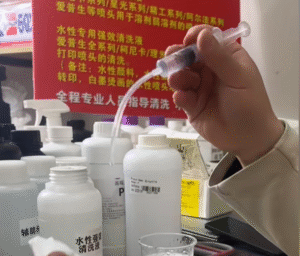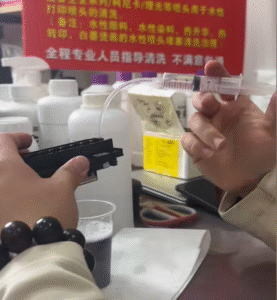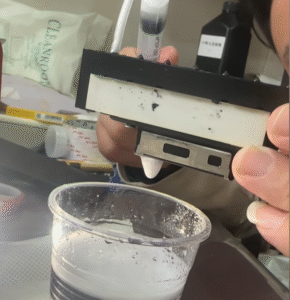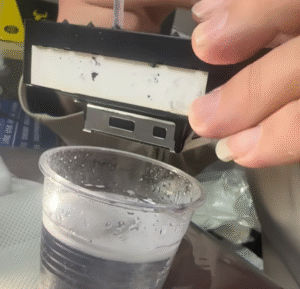Table of contents
Save Costs by Repairing Instead of Replacing Your Printhead
Replacing a printhead can be costly. In many cases, simple maintenance and cleaning can significantly extend the printhead's life and save you money.
This guide applies to a range of Epson printheads, including: DX5, DX7, XP600, TX800, and i3200. These models share a similar cleaning principle.
Let’s take the Epson DX5 as an example.
Step 1: Prepare the Materials
-
High-strength water-based cleaning solution and printhead moisturizer
-
Syringe
-
Ink tubing
Step 2: Draw Cleaning Solution into the Syringe
Always use a dedicated printhead cleaning solution instead of alcohol or random solvents. The type of cleaning fluid should match the ink type and printhead model. Below is a quick reference:
| Ink Type | Recommended Cleaning Fluid | Notes |
|---|---|---|
| Dye / Pigment (Water-based) | Water-based cleaning fluid | Typically includes deionized water & solvents |
| Pigment Ink | Water-based fluid with surfactants | Designed to dissolve pigment particles |
| Solvent Ink | Solvent-based cleaning fluid | Contains volatile organic compounds |
| Eco-solvent Ink | Eco-solvent specific cleaner | Gentler than solvent but not cross-compatible |
| UV Ink | UV ink cleaning solution | Capable of dissolving resin-like UV ink |
| Sublimation Ink | Sublimation-compatible cleaning fluid | Similar to water-based, but thicker |
Here, let's take water-based ink as an example.

Step 3: Gently Push and Pull Cleaning Solution
Use the syringe to slowly draw and push the fluid back and forth through the printhead.


Tips for this step:
-
-
Repeat the push-pull process several times
-
Do not use excessive force, which could damage the nozzle structure
-
Move the fluid slowly
-
If the room temperature is low, slightly warm the cleaning fluid
-
Continue until fine foam starts to appear
-
Step 4: Observe the Printhead
Once foam begins to form and exits smoothly, you can check the nozzle condition.
At this stage, you may use a maintenance fluid (also known as moisturizing solution, care liquid, or storage fluid). Unlike cleaning fluids, these are used to:
-
Keep the nozzles moist and prevent clogs
-
Relieve minor clogs temporarily
-
Protect the printhead during storage or downtime
-
Assist recovery after cleaning

You may consider the cleaning complete when:
1、There’s no more foam coming from the nozzle
2、The fluid flows in a straight and continuous line without interruption
Step 5: When to Consider Replacing the Printhead
For Epson heads such as DX5, DX7, XP600, if the printhead has been in use for more than 2 years, and cleaning does not improve print quality, it is generally not recommended to continue cleaning. Replacement may be more effective at this stage.
